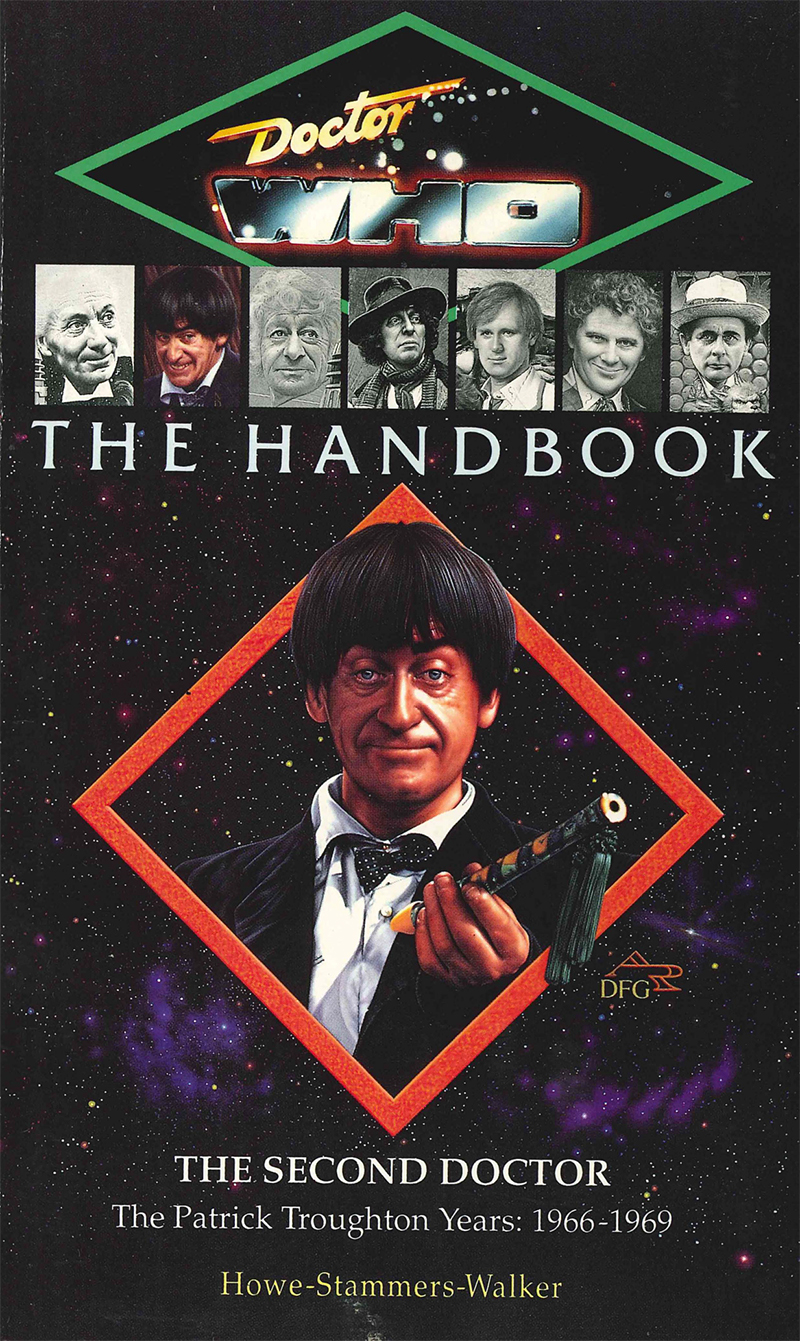 Story: Actors have had to replace other actors before, both on television and on the stage, but seldom has an attempt been made to change horses mid-stream that rivaled tha audacity of the first changeover of lead actors in Doctor Who. William Hartnell, who had become an unlikely hero to his young audience in three years of battling Daleks and other menaces from outer space and Earth history, was replaced by Patrick Troughton, an actor whom Hartnell regarded highly though the two didn’t look even remotely similar. With Troughton’s wildly different take on the character, and with the show evolving into more of a science fiction adventure series, “The Second Doctor Handbook” has a lot of material to cover. The authors also lavish praise and throw rotten fruit where appropriate in a section of episode-by-episode reviews.
Story: Actors have had to replace other actors before, both on television and on the stage, but seldom has an attempt been made to change horses mid-stream that rivaled tha audacity of the first changeover of lead actors in Doctor Who. William Hartnell, who had become an unlikely hero to his young audience in three years of battling Daleks and other menaces from outer space and Earth history, was replaced by Patrick Troughton, an actor whom Hartnell regarded highly though the two didn’t look even remotely similar. With Troughton’s wildly different take on the character, and with the show evolving into more of a science fiction adventure series, “The Second Doctor Handbook” has a lot of material to cover. The authors also lavish praise and throw rotten fruit where appropriate in a section of episode-by-episode reviews.
Review: What was going through the minds of Doctor Who’s producers when they cast Patrick Troughton as William Hartnell’s replacement? That’s a big part of what the authors, the three most accomplished documentarians of the BBC’s most popular science fiction series, tackled with this book. And boy,was I surprised at what they revealed here. Long has the official party line been repeated that Hartnell had to retire from his favorite role due to illness, but it seems that Hartnell’s health problems – early symptoms of multiple sclerosis – were only a small part of that decision. With producer Innes Lloyd having seen great success – and better ratings – with more modern SF-oriented stories (i.e. The War Machines), and with Hartnell’s increasing reluctance to have anything to do with the more violent, action-oriented stories being conceived, a mutual decision was reached to write Hartnell out of the series without doing away with the Doctor himself.
The casting and development process for the second Doctor is covered extensively, including some of Troughton’s more outlandish ideas about disguising himself to avoid being typecast or associated with what he felt would be a very short and unsuccessful run as Hartnell’s successor. Ultimately, Troughton stayed for three years,and his era ushered in a renaissance that defined a great deal of what Doctor Who later became: more serious, less geared toward kids, and using elements of horror and SF in equal measure. With the greater reliance on the fantastic and the macabre, however, comes more special effects, costumes and sets, and that costs more money – and the inevitable bitter budget battles are chronicled here in the form of a series of finger-pointing, name-calling, muck-raking BBC memos which barely disguise their writers’ contempt with politeness.
It’s a fascinating read throughout, and sadly it’s as close as we’re likely to get to a biography of Troughton, who captained his own ship during WWII and took out numerous enemy boats and subs during his tour of duty – surely an adventure as worthy of retelling as anything the Doctor has seen. For anyone who’s ever wondered how one of the most essential central concepts of Doctor Who was developed, this book is a must.
Year: 1998
Authors: David J. Howe, Mark Stammers, Stephen James Walker
Publisher: Virgin
Pages: 306



